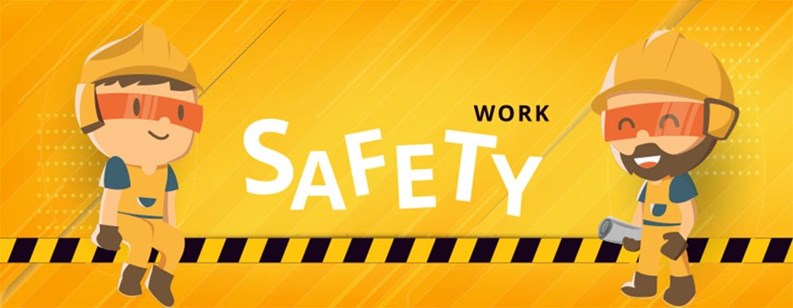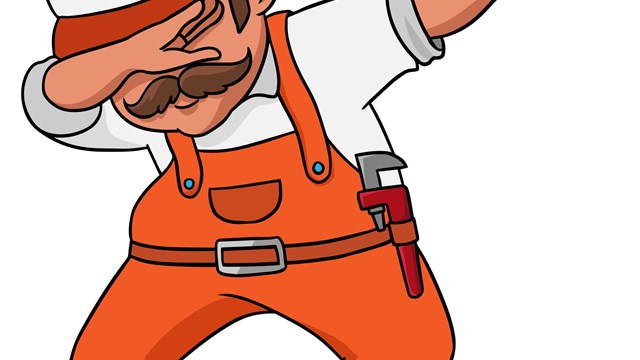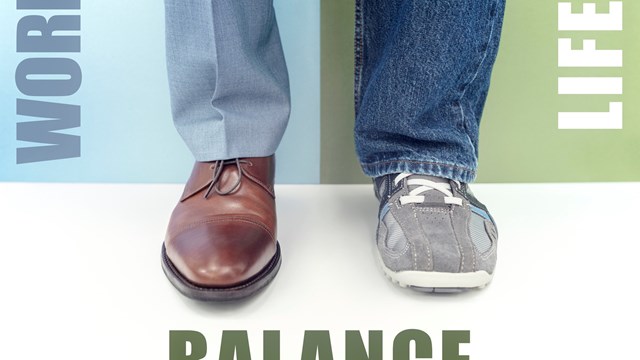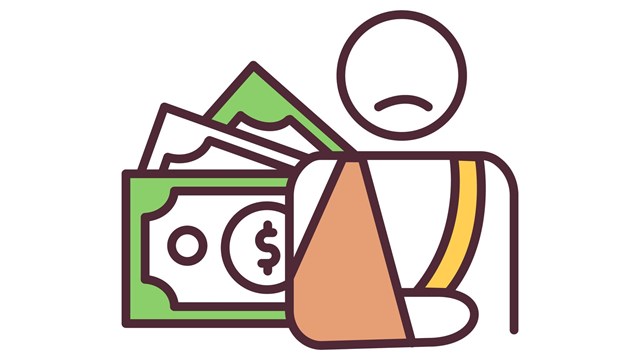With few exceptions, most multifamily buildings or communities have at least one or two staff members (and sometimes many more) who maintain the safety, security, cleanliness, mechanical operations, and day-to-day functions that residents and visitors rely on. But who ensures the safety and security of the staff themselves? What systems and protocols are in place to address how employees can keep themselves—and each other—safe on the job? New England Condominium went behind the acronyms to find out.
OSHA
Workplaces throughout the United States and its territories are subject to the Occupational Safety and Health Administration (OSHA), overseen by the U.S. Department of Labor. According to the OSHA website, “OSHA creates and enforces regulatory standards that require certain precautions to be taken in order to ensure the safety and health of workers.”
OSHA regulations are the primary worker safety statutes in the U.S., says Matthew Persanis, a partner with Elefante & Persanis, LLP, a labor, employment, and real estate law firm in Scarsdale, New York, who is also labor counsel to a number of employer associations. “If a building complies with OSHA regulations, they are complying with what they need to.”
Part of keeping employees safe is making sure they’re properly trained for the tasks expected of them. According to an OSHA spokesperson, “Property staff must have training appropriate for the types of jobs and tasks they are performing. If they work on electrical equipment, they need to be qualified. If they work with chemicals, they need to be trained in the safe use of those chemicals. If they are performing servicing and maintenance on equipment, it is possible they will need training in the control of hazardous energy. It is their employer’s responsibility to ensure the workers are trained on the hazards to which they are exposed. OSHA offers free, confidential onsite safety and health consultation services.” More information is available at www.osha.gov.
It is the responsibility of the employer to ensure that OSHA standards are followed and maintained; it is the responsibility of the employee to call out serious hazards and to inform OSHA when they believe an employer is not compliant. OSHA compliance officers perform drop-in inspections only when there is an imminent or obvious hazard, an injury or fatality, or if a worker or worker representative files a complaint.
“OSHA’s role is to enforce the rules that apply to any work being performed on-site,” says Kate Ferranti of SEIU Local 32BJ, the Service Employees International Union, which represents building workers throughout the Mid-Atlantic and New England. “They can inspect a condo if there is a history of accidents there, or if an employee files a complaint regarding lack of training or if a hazardous condition exists.”
32BJ
According to James Barry, Senior Manager of Program Development for the 32BJ Training Fund, the union has more than 175,000 members, making it the largest property workers’ union in the United States. Nearly 20,000 of those members work in Massachusetts, Rhode Island, and New Hampshire, and include cleaners, doormen, porters, maintenance workers, window cleaners, security guards, superintendents, and theater and stadium workers.
In addition to the healthcare benefits, retirement planning, wage negotiations, and collective advocacy that the union provides its members, 32BJ offers more than 200 educational courses and certifications through its jointly administered multiemployer Training Fund—many of which have a strong safety-related component. To be qualified as a window cleaner, for example, a candidate must pass a series of training courses certifying them to carry out different aspects of the job, such as suspended scaffold safety and rope skills.
In fact, safety is such a tremendously important factor in any residential operation that unions are nearly always involved to some degree in upholding and advocating for better, safer conditions for workers and residents alike. According to Ferranti, “All staff members and property managers can benefit from health and safety training to avoid accidents, and any such training plans are determined by the individual residential buildings. If the employees are participants in the 32BJ Training Fund, there are classes that include significant content on training, including Industrial Training.”
The 32BJ courses are offered free of charge at various locations throughout the jurisdictions of its membership, as well as online. The Training Fund will even set up remote locations for training if the circumstances warrant it. For example, Robert Sparer, a partner with the New York-based labor and employment law firm Clifton Budd & DeMaria, LLP cites a large employer that devoted an entire floor of one of their buildings to erect a mock-up of a boiler to serve as part of their employee use and safety training on boiler operations. Full-length courses run for 11 weeks and are offered quarterly. Some of the most popular offerings include Fire Safety for Residential Buildings, CPR/AED, Air Pollution Control, and Electricity Basics.
Insurance Considerations
Of course, the main, overarching reason for insisting on and maintaining safe conditions on your property is to keep people from getting hurt, period. But beyond just doing the right thing for the right reasons, there are some financial and legal angles to the equation as well. If your association has its own employees, it’s not enough to simply have worker’s compensation and employer’s liability insurance; the association must apply the correct class codes that correspond to the role of the person hired. “The biggest problem an association can run into is if it misclassifies someone,” explains Clifford J. Treese, CIRMS, president of Association Data, Inc. in Mountain House, California. “For example, a clerical class when it’s actually a maintenance person walking around with a hammer and saw in their hand—a class code which would come with a higher premium. With workers’ compensation, there’s a front-end premium that’s rated retrospectively. The association must provide its payroll info and job classification, and at the end of the workers’ compensation policy year, it could turn out that, were an employee misclassified, the association may owe considerably more money than it anticipated.”
According to Gary Daddario, a partner in the law firm of Marcus, Errico, Emmer & Brooks, PC, in Massachusetts and New Hampshire, “I try to have my clients avoid most of these issues by consistently advising them to avoid having employees and to instead hire third-party vendors to perform jobs. As long as the association avoids being an actual employer, they avoid worker’s compensation, disability and other types of employee-related claims. In addition, they avoid the responsibility of managing the employer-employee relationship, as well as certain tax situations, such as payroll taxes. Given the ample amount of contractors attempting to gain business relationships with condominiums, it is not difficult for associations to hire third-party vendors.”
Treese points out that the degree to which you’re responsible for someone working on the association’s behalf all comes back to a simple definition of ‘employee’ as “someone under the employer’s direction or control.” So if you have a roofer working on site, and you’re instructing them to work on building 1 at X time, and then on building 3 at Y time, “You’ve potentially converted a contractor to an employee of the association by controlling the parameters of their work,” he explains. “The thing to remember is that the judgment call on an injured employee is really left to an independent tribunal at the state level that makes decisions about coverage. So you have to make sure that the contractor issues a certificate of liability insurance that shows workers’ compensation, and you’ll have to look at the expiration date to make sure that both of those things haven’t expired before they finish a job.”
IRL
Of course, even with all these organizations, regulations, and protections, in real life (IRL) accidents do still happen. Sparer says that employees do sometimes compromise their own safety by cutting corners when they want to do something quickly—standing on a nearby chair when getting an appropriate ladder would be the proper way to reach something high up, for example—but at the end of the day, when a building violates a labor or safety law covering their employees, the owner is liable.
“The owner is responsible, whether it is a cooperative, condominium, or rental,” says Persanis. “The owner is ultimately responsible for what goes on at the building. Consequences are usually fines.”
“If [an injury happens] on the job, if the employer has been grossly negligent, there could be exposure to litigation and things along those lines,” says Sparer. “If there’s an OSHA violation in connection with it, even if the employer was trying to be consistent, there could be penalties there.” But Sparer also acknowledges that “employers in New York are very sensitive to the issue [of safety] for a variety of reasons—not least of which is avoiding injury for their employees.”
In the case of a clear-cut violation, staff should first notify the building’s managing agent of the situation, and let them take it from there. The pros stress that all violations of any kind should be first brought up to the managing agent so that they may be rectified as quickly as possible. If that doesn’t work, then the employees should kick it up the chain and contact their union representative. For violations of labor law and unfair labor practices, again, employees may contact their union, or the National Labor Relations Board. Administrative grievances can be directed to the Department of Labor or OSHA for health violations.
The Final Word
While there may be a lot of abbreviations involved in the training and ongoing safety protocols for building staff, what should never be abbreviated are the actual precautions and information that are in place to ensure their safety. Proper education, implementation, and compliance—for both employees and their employers—are the cornerstones of a safe and injury-free working environment for the doormen, porters, handymen, security personnel, maintenance workers, elevator operators, and managers who service and support the city’s many co-op and condo buildings. Take advantage of the training, advocacy, and support that are available through a variety of organizations in the city and elsewhere, and always keep in mind that it’s better to be safe than sorry.
Darcey Gerstein is Associate Editor and a Staff Writer for New England Condominium.










Leave a Comment